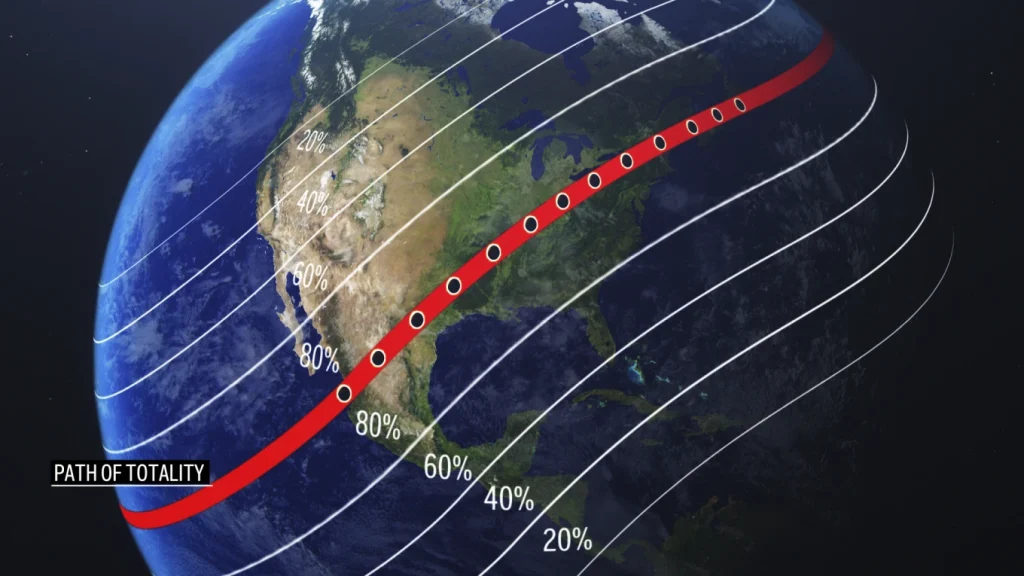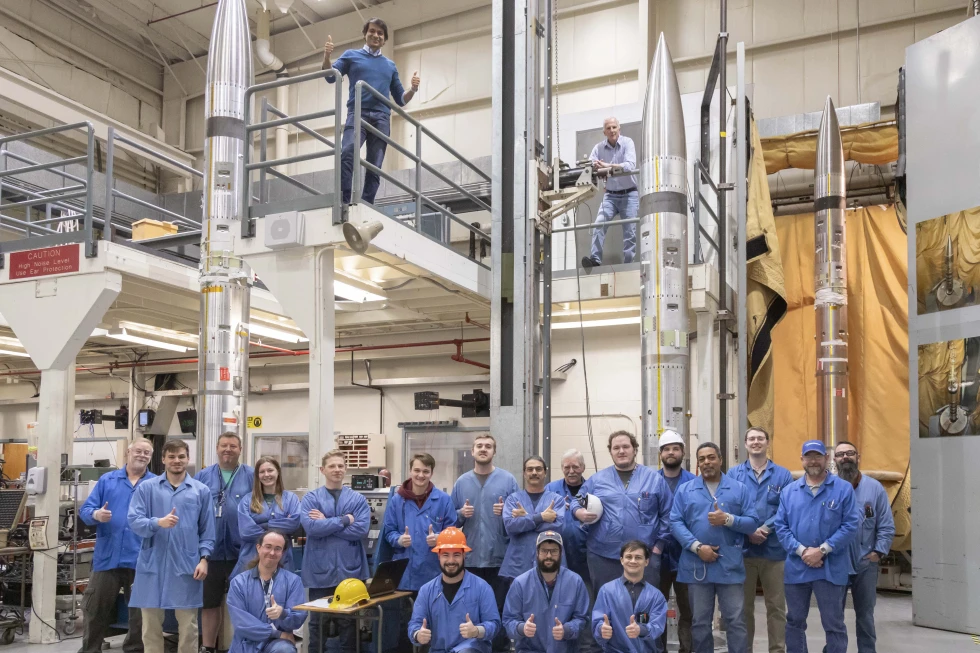The upcoming total solar eclipse in April presents a unique and exciting opportunity for scientific exploration and discovery.
With advancements in spacecraft and telescopes, coupled with the celestial alignment of the moon and the sun, this event is poised to be a scientific bonanza.
The convergence of these factors will create a rare and intense period of darkness, allowing for in-depth observations and research into various phenomena associated with the eclipse.
One of the key highlights of this eclipse is the close proximity of the moon to Earth, which will result in a prolonged period of totality.
During this time, the sun is expected to exhibit increased activity, potentially leading to dramatic bursts of plasma. The path of totality, spanning from Mexico to the U.S. and Canada, will offer a densely populated corridor for observers and researchers alike.
A significant aspect of this eclipse is the active participation of citizen scientists, who will play a crucial role in data collection and analysis.
By photographing the sun’s corona, observing changes in animal behavior, monitoring temperature fluctuations, and assessing communication disruptions using ham radios, these enthusiasts will contribute valuable insights to our understanding of the Earth-sun relationship.
In addition to ground-based observations, scientific endeavors will also extend to the skies above. Rockets equipped with specialized instruments will be launched into the ionosphere, the electrically charged region of the atmosphere near the edge of space.
These missions, originating from Wallops Island, Virginia, will provide valuable data on the effects of the eclipse on this atmospheric layer.
Furthermore, NASA’s high-altitude jets will be deployed to chase the moon’s shadow, equipped with advanced telescopes to study the sun’s corona and surrounding dust particles.
While dust may seem mundane at first glance, it holds significant scientific value as a remnant of the early solar system formation, offering insights into the history and evolution of our cosmic neighborhood.
The collaborative efforts of researchers, citizen scientists, and space agencies during this total solar eclipse exemplify the spirit of exploration and curiosity that drives scientific progress.
As we prepare to witness this celestial spectacle, we are reminded of the vast mysteries of the universe waiting to be unraveled through dedicated observation and inquiry.
The upcoming celestial event of a total solar eclipse in April is set to captivate not only the general public but also a multitude of scientists and researchers eager to delve into the mysteries of the sun’s corona.
More than 600 weather balloons, launched by college students across the country, will play a crucial role in this endeavor by providing live streams and collecting valuable data on atmospheric changes.
Despite cloudy skies potentially obstructing ground observations, these high-flying balloons, reaching altitudes of 80,000 feet and beyond, remain unaffected, ensuring a continuous stream of vital information.
The ambitious project spearheaded by astrophysicist Angela Des Jardins from Montana State University exemplifies the collaborative and innovative spirit driving scientific exploration.
In parallel, the University of Hawaii’s Shadia Habbal plans to elevate a 21-foot kite carrying scientific instruments to three miles above Texas, aiming to bypass any cloud cover that could impede her study of the sun.
The enigmatic corona, with its intricate tendrils extending thousands of miles into space and temperatures soaring into the millions of degrees, poses a perplexing conundrum for scientists.
Despite decades of research, the mechanism behind the corona’s extreme heat remains elusive, underscoring the significance of events like total solar eclipses in unraveling these cosmic enigmas.
Renowned NASA astrophysicist Fred Espenak, affectionately known as Mr. Eclipse, emphasizes the unparalleled scientific value of total solar eclipses in shedding light on celestial phenomena.
With the next comparable total solar eclipse not slated until 2045, the scientific community is seizing the opportunity presented by April’s eclipse, set to traverse a path spanning from the Pacific to the Atlantic, encompassing multiple U.S. states and culminating in Canada.
The forthcoming eclipse promises extended periods of darkness due to the moon’s closer proximity to Earth, facilitating enhanced scientific observations and data collection.
Furthermore, the sun’s impending peak solar activity augments the potential for significant solar events during the eclipse, such as coronal mass ejections, offering a rare glimpse into the sun’s dynamic behavior.

The deployment of cutting-edge spacecraft like NASA’s Parker Solar Probe and the joint European Space Agency and NASA’s Solar Orbiter underscores the concerted efforts to leverage modern technology in tandem with celestial events for comprehensive solar research.
Concurrently, ground-based radar stations strategically positioned along the eclipse path will monitor upper atmospheric changes, providing valuable insights into space weather dynamics.
In conclusion, the convergence of scientific ingenuity, technological advancements, and celestial phenomena during April’s total solar eclipse heralds a momentous occasion for researchers worldwide.
As the world prepares to witness this celestial spectacle, the collective pursuit of knowledge and discovery underscores the enduring allure of the cosmos and the boundless possibilities for scientific exploration.
